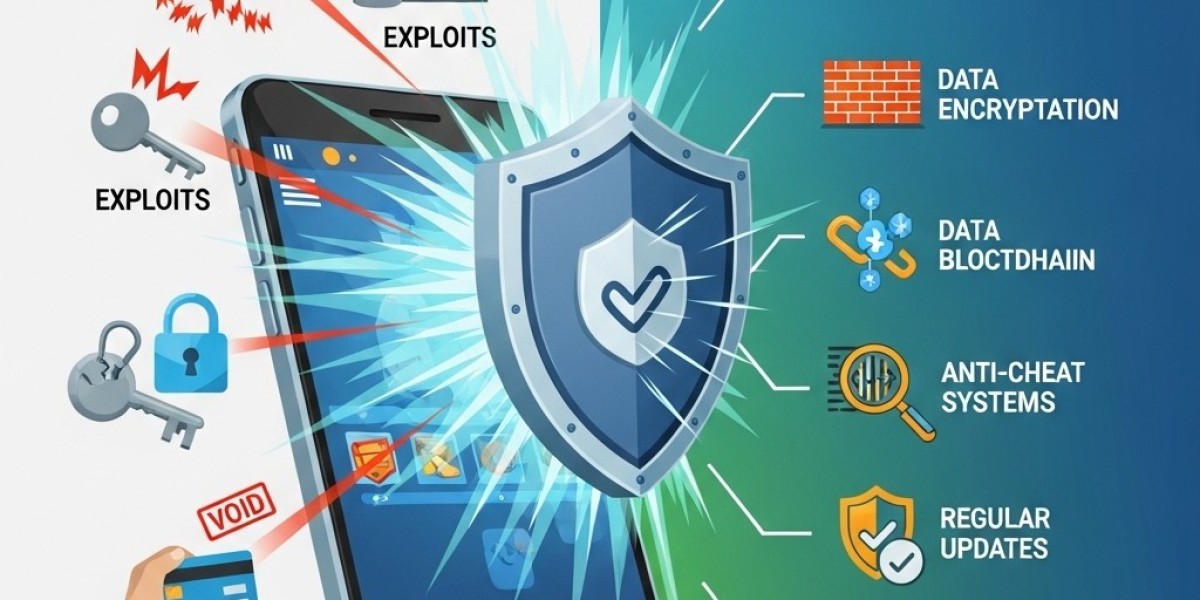In today's booming mobile gaming industry, success isn't just about great graphics, addictive gameplay, or smooth performance — it's also about security. Whether you're developing a casual puzzle game or a high-stakes multiplayer battle arena, one truth remains: hackers and fraudsters will target your game if it gains enough popularity.
Cybercriminals exploit weak security measures to steal user data, cheat the system, or gain unfair advantages. This not only damages your brand reputation but can also lead to massive revenue losses. That's why developers must prioritize mobile game fraud prevention from the start.
In this guide, we'll explore why game security is so critical, the most common hacking and fraud threats in mobile gaming, and proven strategies to prevent game hacking and secure your gaming app.
Why Security Matters in Mobile Gaming
The mobile gaming industry is expected to cross $200 billion in annual revenue in the coming years, attracting millions of players worldwide. Unfortunately, where there's money, there's also fraud.
Security breaches can result in:
Loss of revenue through unauthorized in-app purchases or virtual currency theft.
Unfair gameplay experiences that drive legitimate players away.
Reputational damage occurs when players feel unsafe or cheated.
Legal consequences if sensitive user data is exposed.
Simply put, a compromised game loses trust — and trust is everything in gaming.
Common Hacking & Fraud Tactics in Mobile Games
Before we dive into solutions, it's important to understand the enemy. Here are the most common security threats developers face:
2.1 Cheat Engine Exploits
Hackers use tools like Cheat Engine to modify game memory, speed up gameplay, or gain infinite resources. This ruins competitive balance and frustrates honest players.
2.2 APK Modding
Attackers reverse-engineer your Android APK, remove security checks, and redistribute a "modded" version that gives them advantages — often bundled with malware.
2.3 Account Takeovers
Weak authentication systems can lead to stolen accounts. Hackers may sell these accounts on black markets for real money.
2.4 Payment Fraud
Fraudsters exploit loopholes in payment systems, make unauthorized in-app purchases, or use stolen credit cards, leading to chargebacks and financial loss.
2.5 Bot Attacks
Automated bots farm in-game resources, distort leaderboards, and overload your servers.
2.6 Man-in-the-Middle (MITM) Attacks
If your game doesn't use secure communication, hackers can intercept and alter data packets between the client and server.
Understanding these threats is the first step in mobile game fraud prevention.
How to Prevent Game Hacking and Secure Your Gaming App
Now, let's get into actionable strategies you can implement to protect your mobile game from hackers and fraudsters.
3.1 Implement Strong Encryption
Use SSL/TLS protocols for all client-server communications to prevent MITM attacks.
Encrypt sensitive game data (e.g., player stats, in-game currency) both in transit and at rest.
Avoid hardcoding encryption keys inside the game client — store them securely on the server.
Pro Tip: Use industry-standard encryption like AES-256 for maximum protection.
3.2 Server-Side Game Logic
Never trust the client completely. If your game logic (e.g., score calculation, currency updates) runs entirely on the client-side, hackers can manipulate it.
Instead:
Run critical calculations and validations on the server.
Treat the client only as a display and input device.
Use server-authoritative architecture to ensure no unauthorized changes can occur.
3.3 Secure Authentication
Use OAuth 2.0 or similar secure authentication methods.
Implement two-factor authentication (2FA) for sensitive actions like high-value purchases or account changes.
Monitor for unusual login patterns (e.g., multiple logins from different countries in a short period).
3.4 Anti-Tamper & Anti-Debugging Measures
Integrate anti-tamper software to detect when your APK or iOS app is modified.
Use code obfuscation to make reverse engineering more difficult.
Detect if your app is running on a rooted/jailbroken device and limit functionality accordingly.
3.5 In-App Purchase Security
To prevent payment fraud:
Always validate purchases server-side with the app store's API.
Store no payment information directly in the app.
Set up fraud detection systems to identify suspicious purchase patterns.
3.6 Bot & Script Detection
Use CAPTCHA or human verification during critical gameplay actions.
Monitor server activity for repetitive or unnatural patterns.
Implement rate limiting to reduce automated abuse.
3.7 Regular Updates & Patch Management
Hackers love outdated software.
Release regular security patches.
Actively monitor for newly discovered vulnerabilities in your game engine, third-party SDKs, and libraries.
Maintain an active security response team to handle reported issues quickly.
3.8 User Education
While technical measures are crucial, players can also be your first line of defense.
Educate them on the dangers of downloading unofficial game versions.
Warn about phishing attempts disguised as game offers.
Encourage strong, unique passwords.
Advanced Security Measures for High-Risk Games
If your game involves real-money transactions, competitive eSports, or valuable in-game economies, you should consider these advanced strategies:
4.1 Behavioral Analytics
Use AI-driven fraud detection systems to monitor player behavior. If a player suddenly gains massive resources or performs impossible actions, the system can flag and temporarily suspend them.
4.2 Blockchain-Based Transactions
Blockchain technology can secure in-game asset ownership and reduce fraud in player-to-player trading.
4.3 Honeypot Traps
Create fake data or impossible rewards that only cheaters can access. This helps identify and ban them swiftly.
Testing Your Game Security
You can't improve what you don't test. Here's how to test your game's resilience:
Penetration Testing: Hire ethical hackers to simulate attacks.
Bug Bounty Programs: Reward players who report vulnerabilities.
Code Reviews: Regularly audit your codebase for security flaws.
Building a Secure Development Culture
Security isn't a one-time setup — it's an ongoing process.
Encourage your development team to:
Follow secure coding practices from day one.
Stay updated on the latest security threats.
Treat mobile game fraud prevention as a business priority, not just a technical task.
Conclusion
A mobile game's success doesn't just depend on how fun it is — it depends on how fair, secure, and trustworthy it feels to players. In an era where hackers and fraudsters are constantly evolving, game developers must stay one step ahead.
By implementing encryption, server-side logic, secure authentication, anti-tamper measures, and ongoing monitoring, you can prevent game hacking, reduce fraud, and protect both your revenue and your player base.
Security is not just a feature — it's part of the game experience. If players trust your app, they'll stay longer, spend more, and recommend it to others.








